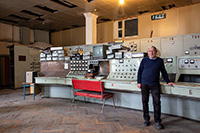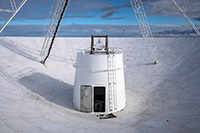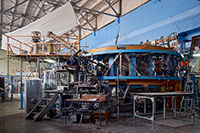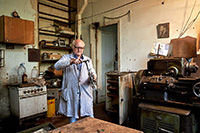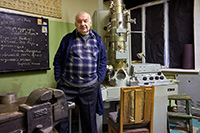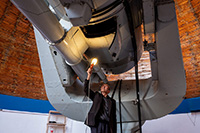Eric Lusito
This project explores the once closed world of Soviet-era physics research centers and their evolution. A journey through time, space and science.
In 2021 in the city of Kharkiv I met a scientist who agreed to show me his laboratory. I discovered a fascinating universe that reminded me of the comic books of my childhood. My curiosity was aroused and I decided to find out more, embarking on a journey from Ukraine to Georgia, Armenia, Latvia, Romania, Hungary, Kazakhstan and Uzbekistan. I also returned to Kharkiv to document the situation of scientists facing the war.
Over the last hundred years, science and technology have deeply transformed our societies. The USSR appeared to be the most exalted by the power of science, up to the point of irrationality. The Soviet Union promoted the cult of science as an ideological tool to unseat the religion and rapidly modernize the country. The USSR spent lavishly to build ever bigger and more sophisticated machines, and eventually became a technological superpower. These utopian worlds of Soviet modernity were embodied in “big science” projects involving up to several thousand people. Science flourished but the research work, designed mostly for the military, was carried out behind closed doors in an atmosphere of complete secrecy.
Once prestigious, the status of scientists changed radically after the collapse of the system. In the turmoil of the 90s, the institutes were virtually abandoned with no funding. The extremely low salaries – sometimes $5 per month – led to disillusionment and a brain drain. Despite the hardship, some scientists have resisted and devote their lives to save their facilities and continue research. Often too expensive and complicated, these installations are facing many challenges. Today they present a broad range of situations. Some have become obsolete or remain unfinished. Others continue to operate in their original design built decades ago. Some have been successfully modernised. Finally, new programs are being introduced.
Synchrotron, high-voltage laboratory, nuclear research reactor, radio telescope, cyclotron, stellarator… are both science sculptures and a little-known patrimony that deserves more attention. These unique monumental installations built over the decades are spanning one hundred years of physics up to today's most advanced laboratories. These photographs, beyond observing technological evolution, also bear witness to our never-ending quest for knowledge. Archives, documents and portraits complete the project.
------------------------------
Specific publications on the consequences of the war for Ukrainian scientists:
-Physics World (UK): Physics in Ukraine: scientific endeavour lives on despite the Russian invasion
-Science (US): A shattered window to the radio sky - Amid Russian attacks, Ukrainian astronomers fight to salvage a unique observatory


